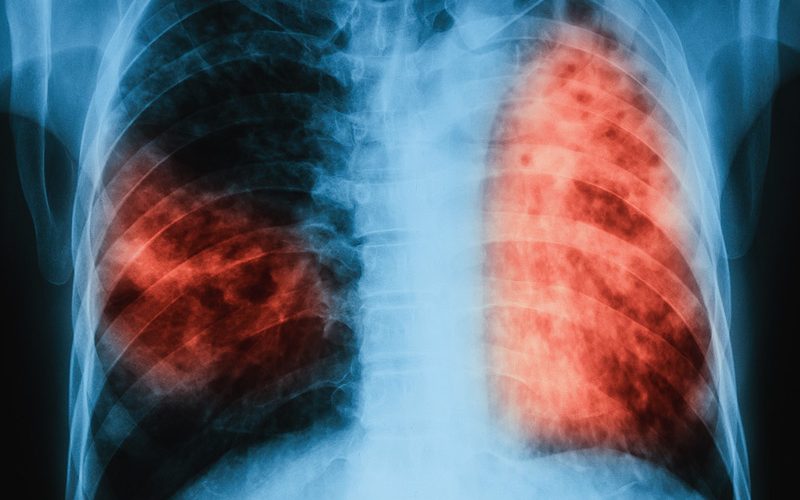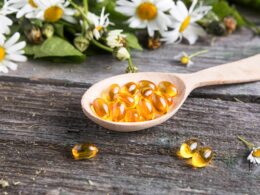Nutrition for tuberculosis is an important ingredient in the successful treatment of infectious diseases.
The main tasks of diet therapy are supplying the body with nutrients, increasing the activity of cells of the immune system, normalizing metabolism, accelerating the regeneration of damaged tissues and reducing the toxic load on the liver (endogenous and exogenous).
clinical picture
Tuberculosis is an infectious disease caused by gram-positive mycobacteria (Koch’s bacillus). These bacilli are extremely resistant to freezing temperatures, acids, alcohols and alkalis. However, for successful reproduction, parasites need a large amount of oxygen and blood. For this reason, the infection often “settles” in a person’s airways, causing pulmonary tuberculosis. In addition, the invasion can affect the lymphatic system, joints, genitourinary organs, bones, brain, skin. At the same time, a permanent inflammatory process develops in the places where the stick stings (due to the intense multiplication of the infection). Then, protective capsules are formed around the point of introduction of the parasite, where the body “seals” the suppressed bacteria.
With strong immunity and proper treatment, the damaged tissue gradually heals. However, even proper therapy cannot give a 100% guarantee of recovery, because some bacilli remain dormant in the body. As soon as favorable conditions for the activation of Koch bacteria are created in the body (reduced immunity, development of hypovitaminosis, increased cancerous burden on the liver), the protective capsule melts at the site of the old wound. At this moment, the microbacteria leave the granulomatous focus, and a cavity is formed at the site of tissue scars – a cavity (secondary tuberculosis).
As the infection progresses, local destruction of the upper and lower respiratory tract occurs. In the presence of a large number of caverns, hemoptysis or pulmonary hemorrhages occur.
The first symptoms of tuberculosis:
- weakness;
- increased fatigue;
- pale skin;
- low-grade fever (37.2 degrees);
- sweating (especially at night);
- weight reduction;
- swollen lymph nodes;
- insomnia;
- a dry cough.
Nutrition for tuberculosis
The caloric share in the daily diet of patients should be 10% higher than the energy value of the daily menu of healthy people (3000-3500 kilocalories).
Features of Tuberculosis Nutrients:
- A lot of protein should be present in the diet, because under the influence of bacterial intoxication, the consumption of this substance increases by 2 times.
For infected patients, the daily dose is calculated based on the ratio of 2 grams of protein per kilogram of body weight (that’s 120-130 grams per day for an adult with a body weight of 60-70 kilograms). In more severe cases, the daily intake of nutrients is increased to 140-150 grams. These components are necessary for the body to heal the site of inflammation, restore tissue proteins, and accelerate the production of immunity against tuberculosis.
Best sources of easily digestible proteins: fermented dairy products (whey, cottage cheese, kefir, sour cream, cheese), poultry (turkey, chicken), rabbit, eggs (chicken, quail), seafood (mussels, fish, oysters, shrimp), grains (pearl barley), buckwheat, oats), legumes (lentils, peas, soybeans).
- Toxins secreted by mycobacteria cause profound changes in the structure of cell membranes. This leads to the activation of lipid peroxidation and, as a consequence, to disturbances in fat metabolism. Based on these processes, a person loses his appetite and quickly loses weight. In addition, in 50% of cases there are dysfunctions of internal organs in which a lot of lipoproteins are concentrated (liver, adrenal glands, brain).
To compensate for the lack of body weight, the daily menu of tuberculosis patients is enriched with fat based on the calculation: there should be 1.2 grams of triglycerides per gram of weight (this is 100-110 grams). However, excess daily intake of lipids has the opposite effect: digestive disorders occur, appetite decreases and liver detoxification functions deteriorate. In addition, when the pathology worsens, it is important to consume no more than 70 – 80 grams of the element per day.
Replenishment of lipid reserves is done by consuming unsaturated fatty acids that are part of vegetable oils (linseed, camellia, cedar), seafood, fish oil.
- With active forms of tuberculosis (accompanied by a febrile condition), the function of the isolation apparatus of the pancreas is inhibited, which leads to a decrease in glycogen synthesis in the liver. In order to prevent metabolic disorders, the patient must receive at least 500 grams of carbohydrates per day. In severe forms of pathology (exudative pleurisy, fibro-cavernous tuberculosis, causal pneumonia, meningitis), the daily portion of saccharides is reduced to 350 grams.
Fresh bread, unrefined cereals, honey and cane sugar are used to replenish glucose reserves. At the same time, it is better to refuse the use of confectionery products, sweet drinks and refined pastries (from white flour).
- Mineral salts. With active tuberculosis, the need for micro and macro cells doubles (due to tissue decay, high temperature, sweating). Deviations in mineral metabolism are the result of weakened synthetic and metabolic functions of the liver.
A key role in the dietary therapy of tuberculosis is played by macroelements: phosphorus and calcium. These nutrients participate in almost all energy and metabolic reactions in the body. In addition, they accelerate the scarring of infectious foci, normalize the blood coagulation process, reduce the manifestations of allergic reactions and reduce the permeability of lymphatic and blood vessels.
With tuberculosis, the daily need for calcium increases to 2-3 grams, for phosphorus – up to 3-6 grams. These substances are found in cottage cheese, cheese, sour cream, kefir, parsley, cauliflower.
- Vitamins Patients with tuberculosis (especially the cavernous form) in 90% of cases suffer from a deficiency of vitamins B, C and A. The introduction of 2-3 grams of L-ascorbic acid into the patient’s diet increases the protective functions of the blood (including the synthesis of T-killers, destroys the infection), neutralizes the decay products of mycobacteria, and stimulates natural immunity against infection. Natural sources of nutrients: sauerkraut, parsley, cranberry, blueberry. In addition, an increased amount of vitamin A (4-5 milligrams per day) should be present in the diet of tuberculosis patients.
Retinol is found in dairy products (butter, cream), fish oil, egg yolks, red-orange vegetables and fruits (carrots, apricots, pumpkins, persimmons, oranges). This substance accelerates the regeneration of damaged tissues (including mucous epithelium), reduces cholesterol concentration in cells (used by mycobacteria), increases the patient’s immune status and participates in the creation of visual purpura. Along with that, group B vitamins are included in the diet for tuberculosis, because they accelerate the healing of tissue wounds, improve the metabolism of proteins and carbohydrates, and stabilize the psycho-emotional background. Whole grain breads, cereals, legumes, vegetable oils, nuts, seeds, eggs, dairy products will help compensate for the lack of these nutrients.
Health products Beekeeping
In the “fight” against tuberculosis, wax moth larvae, propolis, royal jelly, pollen and honey are used as additional therapy for treatment. These products improve metabolic processes in the liver and increase the patient’s immune status.
Useful properties:
- Wax moth larvae. Despite the fact that the fireworm is the main parasite of bee combs, anti-tuberculosis tinctures are made from its eggs. Russian immunologist I. I. Mechnikov experimentally determined that the digestive enzymes of wax moth larvae are capable of dissolving films coated with mycobacteria. As a result, the infection becomes vulnerable to exposure to the main TB drugs.
- Due to the presence of aromatic resins, flavonoids, benzoic and cinnamic acid, the product has pronounced antiseptic, bactericidal properties (especially against tuberculosis bacteria). At the same time, propolis increases natural immunity against infection, accelerates the elimination of harmful cholesterol, improves appetite and reduces the frequency of coughing attacks. In addition, the substance prevents the formation of blood clots, stimulates the process of hematopoiesis, removes vascular spasm.
It is interesting that propolis enhances the effect of antibiotics (polymyxin, tetracycline, neomycin, streptomycin) 10-100 times. In the acute course of the disease, oil and water extracts of beekeeping products are used; alcoholic solutions are allowed during remission.
- Royal jelly. The nutritional value of this product is better than whole cow’s milk: 4-5 times in protein content, 3-4 times in carbohydrate concentration, 2-3 times in fat component. In addition, it has a strong detoxifying and anabolic effect on the body (thanks to the content of flavonoids, immunoglobulins, phytoncides, amino acids, phytohormones, antioxidants, enzymes).
For pulmonary tuberculosis, royal jelly is recommended as part of a photo composite with linden honey, and propolis (to enhance biological properties).
- Pollen (bee pollen). A natural amino acid concentrate that increases the patient’s immune status. In addition, the product accelerates the restoration of tissue proteins, improves metabolic processes in the liver, stimulates the production of red blood cells, reduces the number of relapses, stabilizes cell membranes, neutralizes toxins and waste.
- A comprehensive product that increases the patient’s vitality. Honey improves the enzymatic function of the digestive tract, stimulates the synthesis of red blood cells, increases the phagocytic activity of leukocytes, increases glycogen stores in the liver, and accelerates the neutralization of mycobacterial decomposition products.
Nutritional characteristics
With an active form of tuberculosis, the consumption of essential structures (proteins, vitamins, fats, minerals) increases, which leads to a decrease in natural immunity against infection. In view of this, the main goals of medical nutrition are: to fill the deficit of nutrients, increase the defense organisms, and reduce the toxic load on the liver. In order to solve the problems, the Russian therapist M. I. Pevzner developed a special diet for tuberculosis patients, called “Diet no. 11”.
We advise you to read: Nutrition for hypertension
Basic characteristics of the table:
- The energy value of the daily menu is 3500-4000 kilocalories.
- The optimal ratio of B: V: U in the diet is 120 grams: 100 grams: 450 grams.
- Acceptable methods of heat treatment of food are stewing, baking, cooking, and steaming.
- The nature of the diet is fractional (5-6 times a day), frugal, and abundant (especially during remission).
- Restrictions for accompanying diseases: in the case of iron deficiency anemia, the daily dose of fat is reduced to 80-90 grams, and the portion of protein is increased to 140 grams. If the patient has diabetes, the daily volume of carbohydrates is reduced to 300 grams, and the amount of protein is increased to 130 grams. During the period of weakening of the pathological process, the daily dose of fat and saccharides is reduced to a minimum (70 grams and 300 grams, respectively). In the case of pathologies of the digestive tract, the feasibility of the following “diet no. 11” should be discussed with a tuberculosis specialist.
- Forbidden food: spicy dishes, spices, coffee, black tea, strong meat soups, sour products, semi-finished products, confectionery products, and white sugar.





